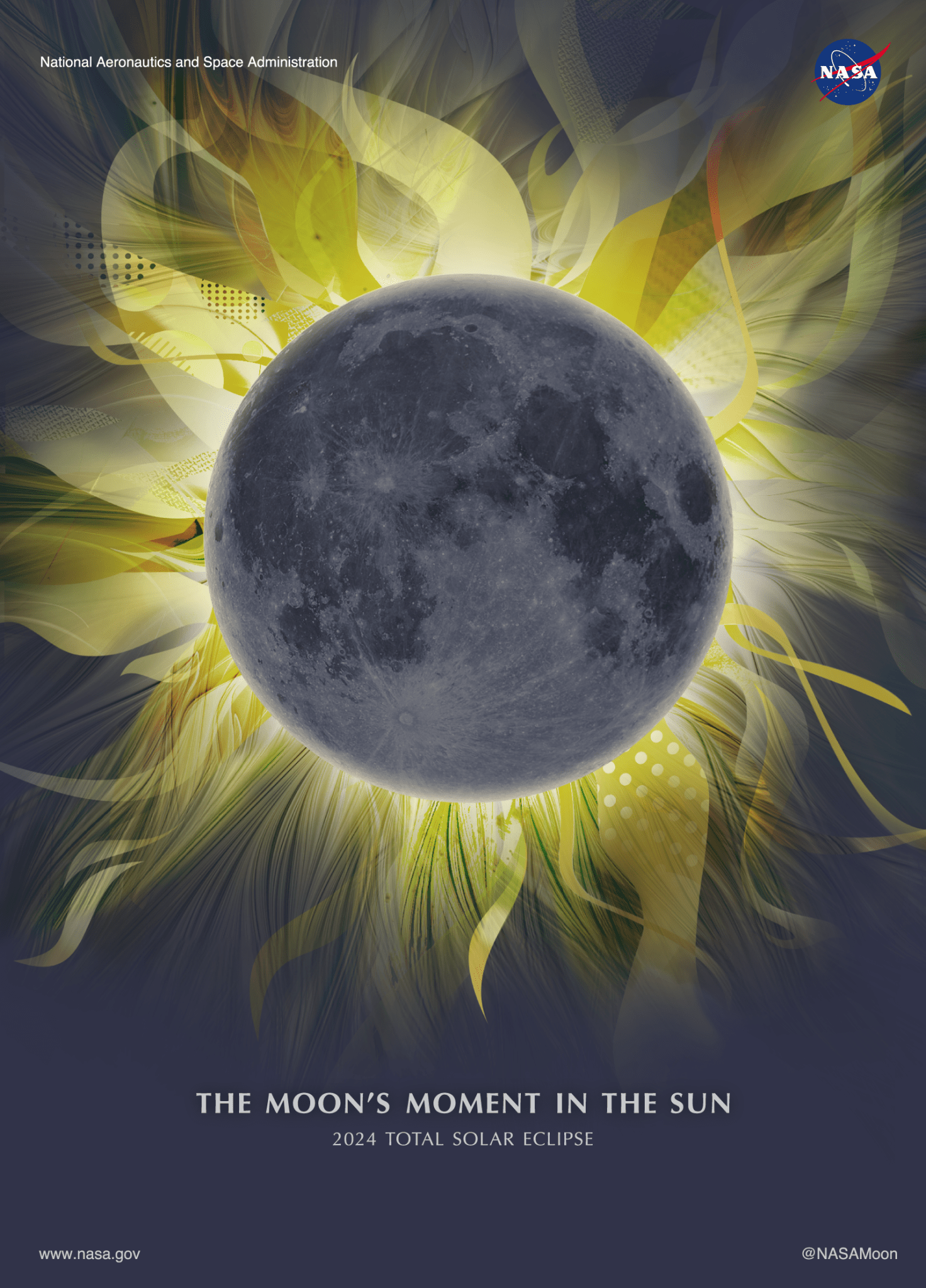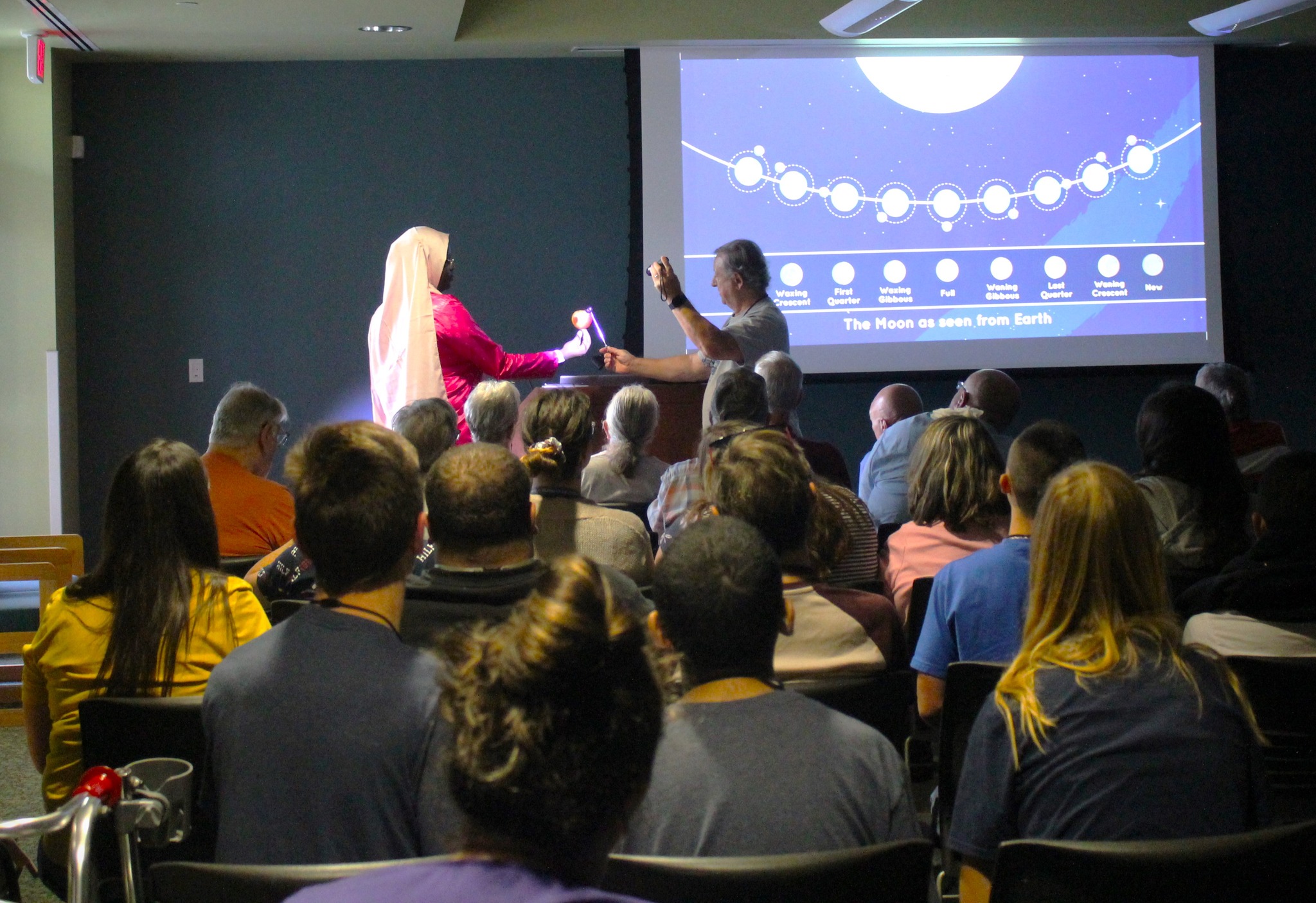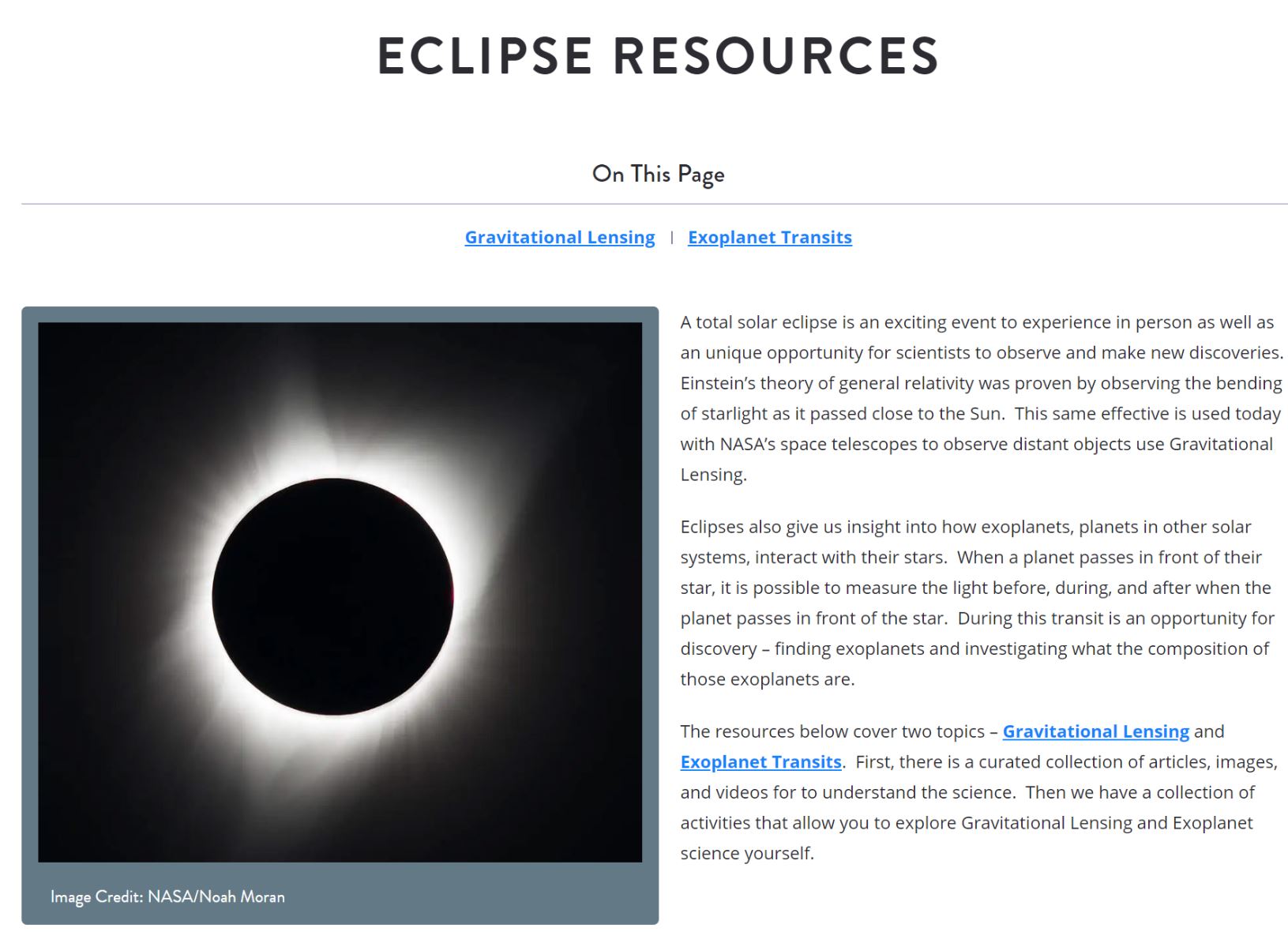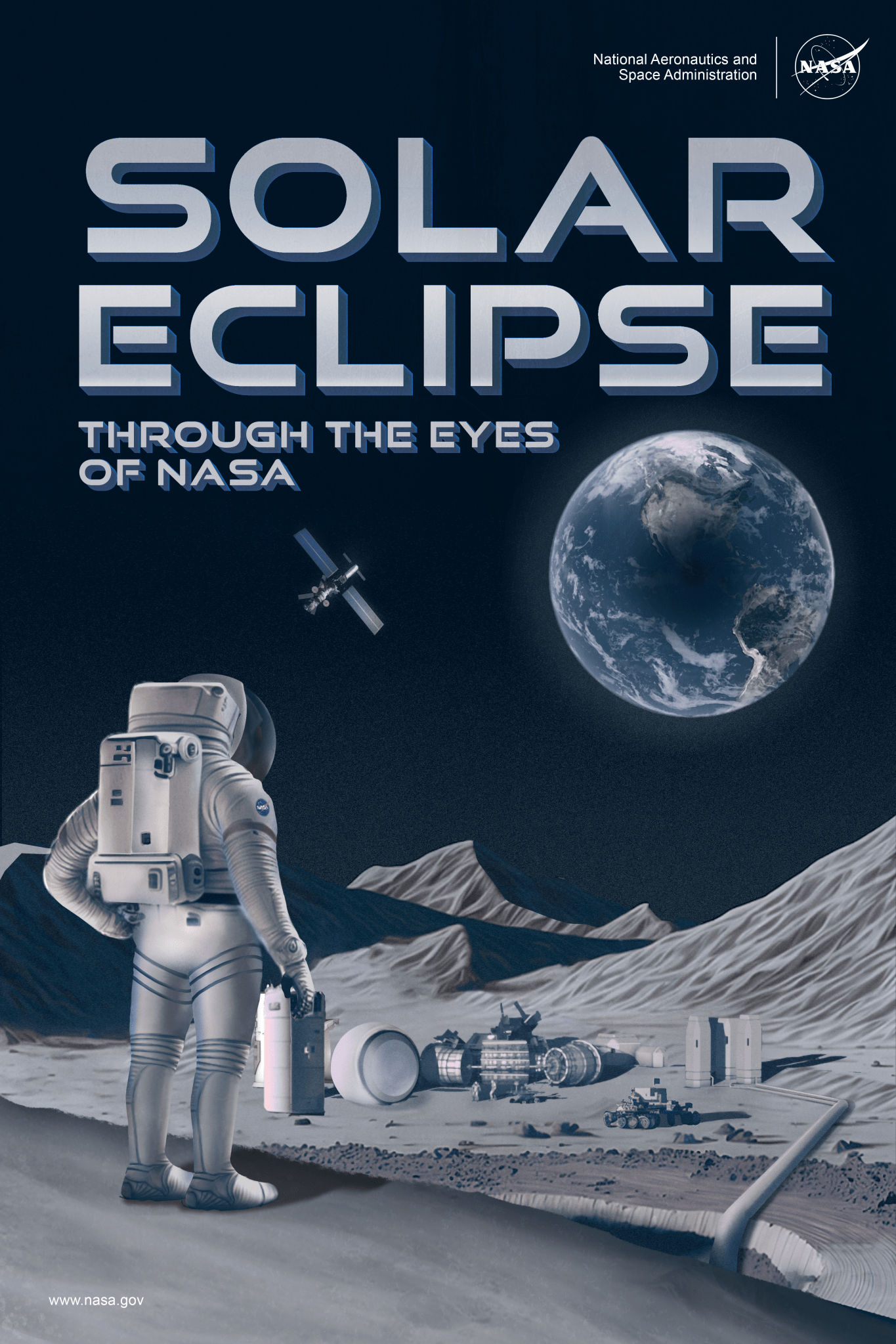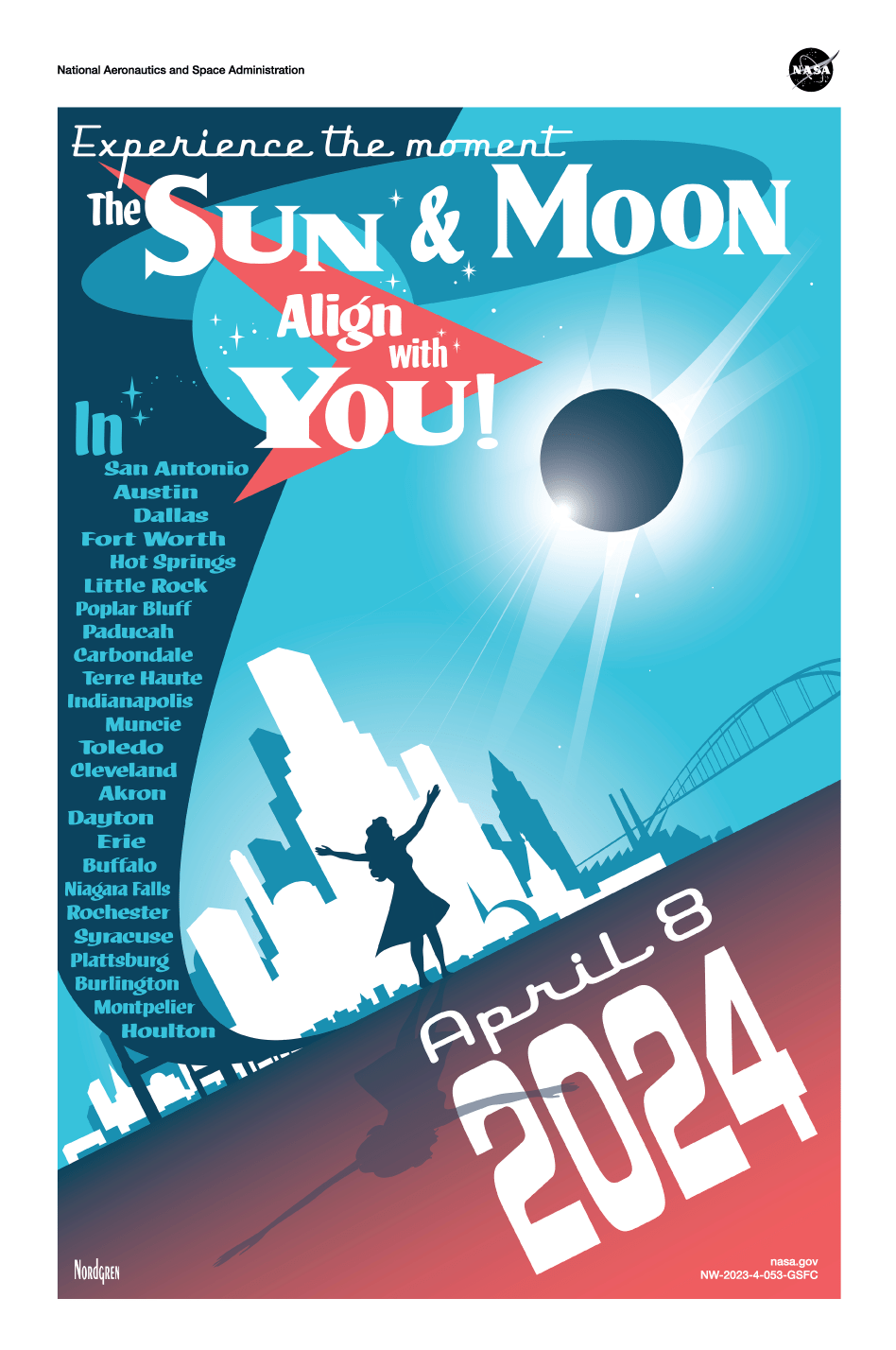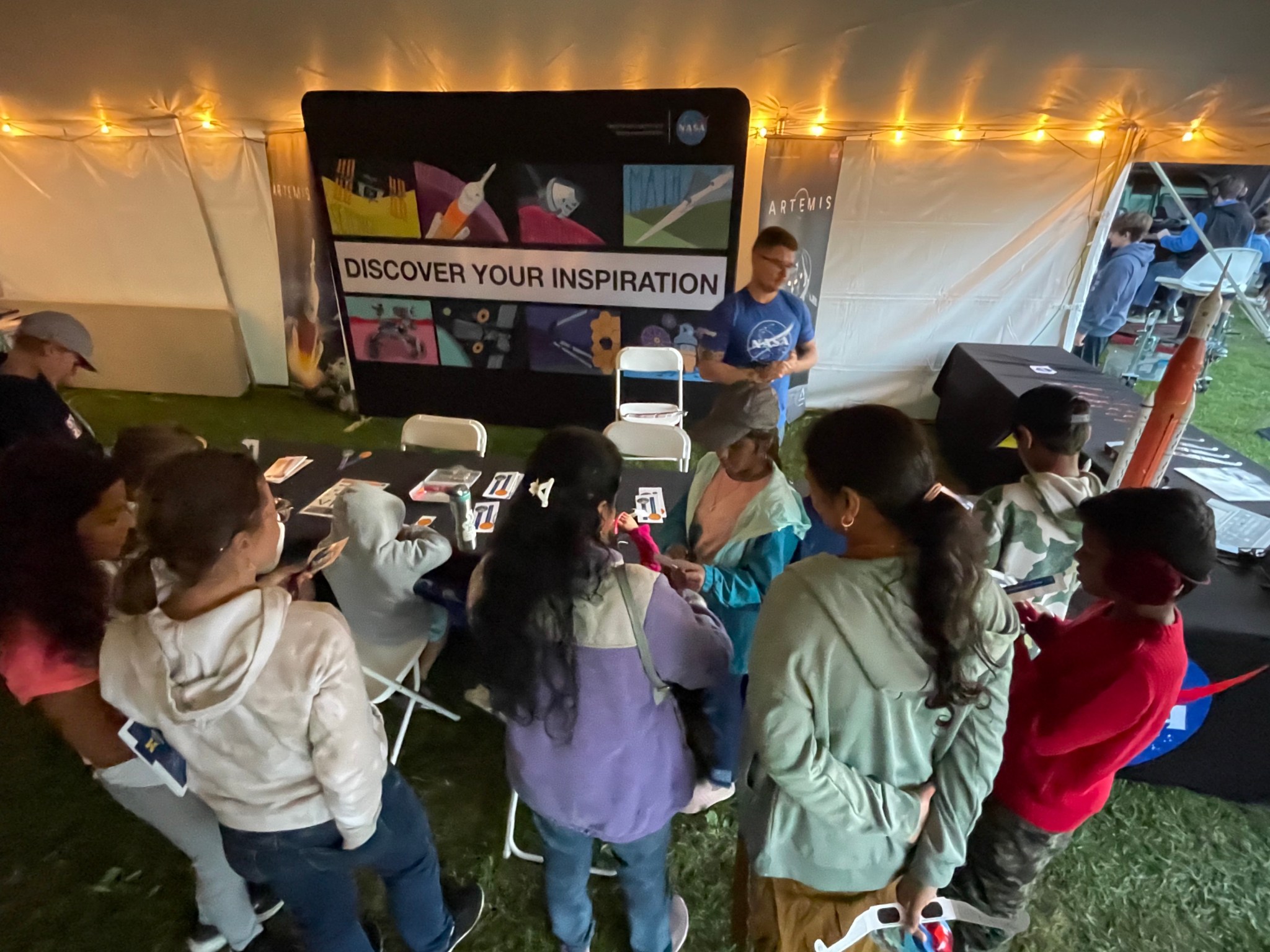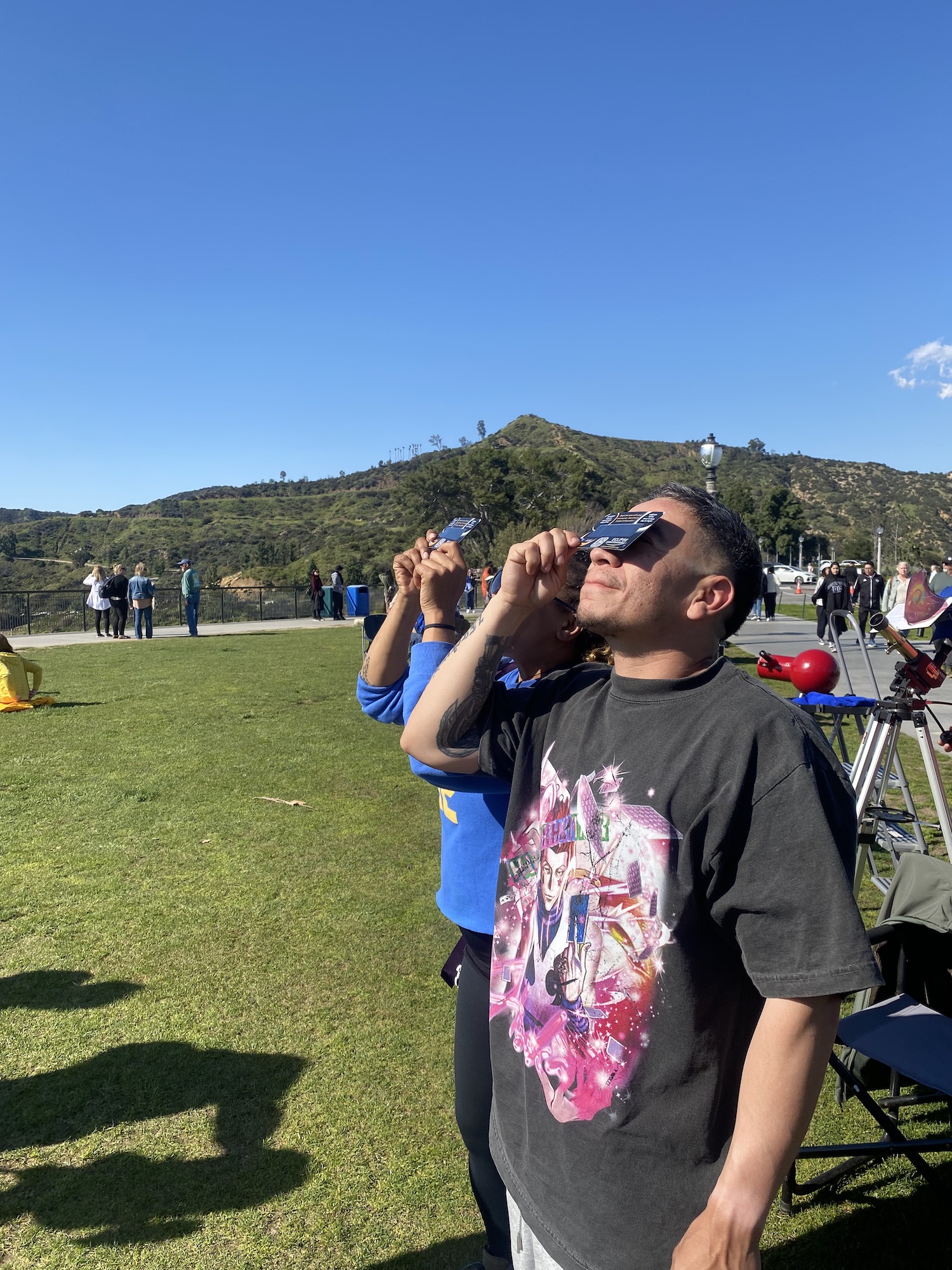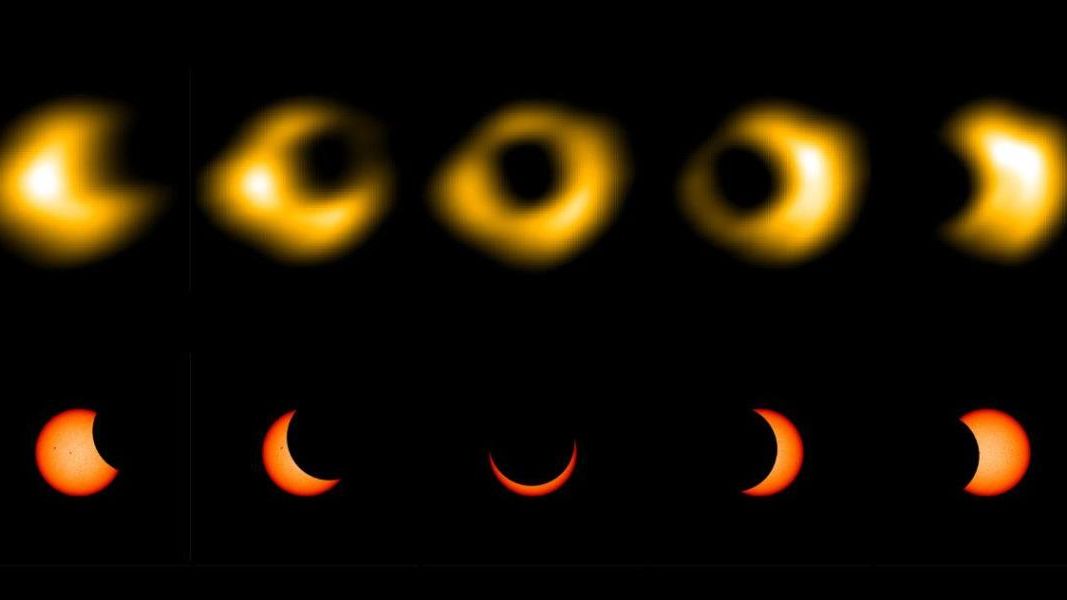5 min read Total Solar Eclipse 2024: The Moon’s Moment in the Sun Artist’s representation of a total solar eclipse, with a new moon in the foreground and the Sun’s corona visible in the background. Download the Poster NASA/Vi Nguyen On April 8, 2024, much of North America will experience a solar eclipse: a cosmic alignment of Sun, Moon, and Earth, in that order. The Moon’s shadow path will make landfall on Mexico’s Pacific coast, cross the United States from Texas to Maine, and exit North America via Newfoundland, Canada,…
Read MoreTag: Solar Eclipses
NASA Launches Snap It! Computer Game to Learn About Eclipses
2 Min Read NASA Launches Snap It! Computer Game to Learn About Eclipses In NASA’s Snap It! An Eclipse Photo Adventure game, players will help the traveler take photos of the Sun and create postcards. Credits: NASA On April 8, 2024, a total solar eclipse will be visible to over 30 million people across North America. To help kids learn about solar eclipses, NASA is launching Snap It! An Eclipse Photo Adventure. On April 8, 2024, a total solar eclipse will be visible to over 30 million people across North America.…
Read MoreEclipse Ambassadors off the Path: Reaching Underrepresented Audiences
2 min read Eclipse Ambassadors off the Path: Reaching Underrepresented Audiences The NASA Science Activation Program’s “Eclipse Ambassadors Off the Path” project is a nationwide initiative that set out in September 2022 to prepare 500 communities on and off the central paths of the back-to-back solar eclipses in 2023 and 2024 to enjoy the science and wonder of this natural phenomenon. Led by the Astronomical Society of the Pacific, this team partners with libraries, community centers, and more to match college undergraduate students and eclipse enthusiasts of all ages with…
Read MoreEclipse Resources for Learners and Educators: Connecting the Eclipse to Astrophysics
1 min read Eclipse Resources for Learners and Educators: Connecting the Eclipse to Astrophysics In anticipation of the upcoming total solar eclipse on April 8, 2024, NASA’s Universe of Learning has created a webpage of astrophysics-related eclipse resources for learners and educators. The webpage shares information about two topics that align with eclipse science: gravitational lensing and exoplanet transits. The collection of resources includes articles, images, and videos to understand and explain the science. Additional activities allow learners to explore gravitational lensing and exoplanet transit science for themselves. Explore Resources…
Read MoreMeet the Creators, Part 4: Two New 2024 Total Eclipse Posters
4 min read Meet the Creators, Part 4: Two New 2024 Total Eclipse Posters Total solar eclipses reveal the Sun’s outer atmosphere – the corona – a white, wispy halo of solar material that flows out from around the Sun. This atmosphere is breathtaking as it glows in the sky for viewers on Earth, surrounding the dark disk of the Moon. In addition to revealing this normally hidden part of our Sun, the eclipse also darkens the sky, changes shadows, and cools the air. It can feel like living inside a…
Read MoreMeet the Creators, Part 3: NASA’s 2024 Total Solar Eclipse Posters
3 min read Meet the Creators, Part 3: NASA’s 2024 Total Solar Eclipse Posters A total solar eclipse is a captivating experience – evoking feelings of awe and wonder that are sometimes best expressed through art. Inspired by the upcoming total solar eclipse of April 8, 2024, artists Tyler Nordgren and Kristen Perrin have designed two posters for NASA that present the magic of the eclipse in unique ways. Tyler Nordgren Download the poster here. NASA/Tyler Nordgren In “The Sun and Moon Align with You” poster for NASA, Nordgren –…
Read MoreEngage with NASA Glenn
5 min read Preparations for Next Moonwalk Simulations Underway (and Underwater) NASA Glenn Research Center’s public engagement team member Matt Baeslack helps students better understand solar eclipses by showing them how to make their own handheld solar eclipse viewer to use for the event. Credit: NASA/Chris Hartenstine At NASA’s Glenn Research Center in Cleveland, we pride ourselves on making the seemingly impossible, possible. From creating more fuel-efficient jet engines and exploring advances in air mobility, to enhancing radio frequency and optical communications technology, Glenn plays an important role in many…
Read MoreCalling all Eclipse Enthusiasts: Become a NASA Partner Eclipse Ambassador!
2 min read Calling all Eclipse Enthusiasts: Become a NASA Partner Eclipse Ambassador! By Vivian White, Astronomical Society of the Pacific Eclipse Ambassadors help share information with their communities about how to safely observe the Sun, such as using handheld solar viewers. Los Angeles Astronomical Society/Iraneide De Oliveira Are you an astronomy enthusiast or undergraduate student with a passion for sharing space science? We are excited to share with you a wonderful opportunity to become an official NASA Partner Eclipse Ambassador and help your community experience the awe and wonder…
Read MoreWhere will the April 2024 total solar eclipse be visible from?
Where will you be on Monday, April 8, 2024? On that day a total solar eclipse will be visible from North America and location is everything. The entire continent will see a partial solar eclipse, with the all-important path of totality heading from northwest Mexico through the U.S. to southeastern Canada. That path will be 115 miles (183 kilometers) wide, on average, and only within it will it be possible to experience darkness in the day and glimpse the sun’s corona for up to 4 minutes 28 seconds. This path…
Read More1st-ever radio images of an annular solar eclipse showcase the sun’s extended corona
Your social media feeds might’ve been filled over the past couple of weeks with photos of the recent “ring of fire” annular eclipse, which crossed the western U.S. on Oct. 14. But it wasn’t just photographers who imaged the celestial event. Scientists from the New Jersey Institute of Technology’s Center for Solar-Terrestrial Research (NJIT-CSTR) used the new Owens Valley Radio Observatory Long Wavelength Array (OVRO-LWA) in California to capture the first-ever radio images of an annular solar eclipse. Using a set of 352 antennas measuring radio wavelengths between approximately 20…
Read More